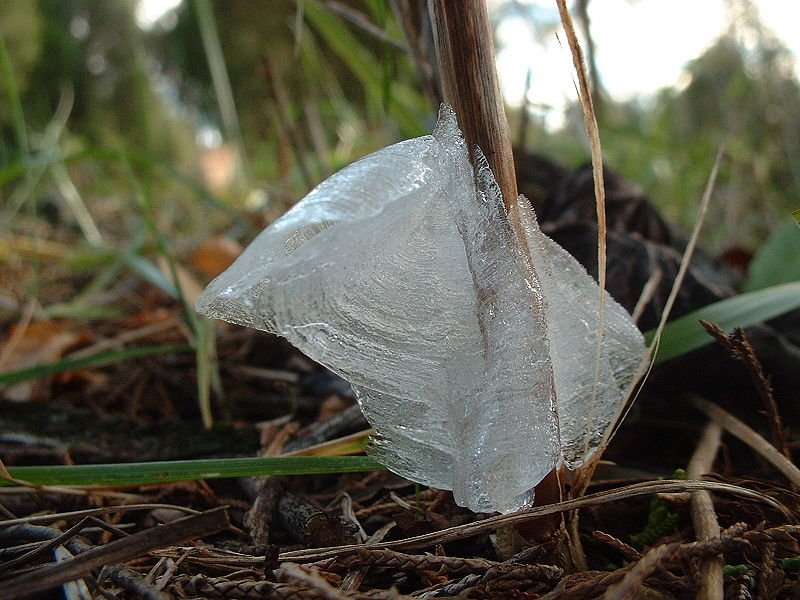Which one do you think is the most delicate and rare flower on the planet? Would you be surprised if I told you that the finest and most fragile flower is not even a flower ans it's made of ice? That's right, meet the frost flowers!

(Image source - author, Slomoz - license)
Beautiful gardens of icy blooms that appear during the night and live shortly after the sun sets. Those amazing formations are created by plants only when the conditions are ideal and are so delicate that they will melt or sublime with the first sunlight or human touch.
How are they made?
Specific plants are in charge of those beautiful and bizarre flower beds. In autumn, when the temperature of the air drops but the ground is still warm enough to keep sap running within plants' roots and stems there is a chance to watch those "flowers" if you're lucky enough and if you wake up early ;)
In freezing temperatures the sap flowing in the stem starts expanding opening tiny cracks along the stem. The water escaping through the cracks instantly freezes when it meets the cold air, as more and more water is pushed out through the cracks, it pushes the already formed ice layers further and further, leading to those amazing ice crystal formations. Just try to picture it in a time lapse and those thin, delicate veils of ice starting to grow out of a plants stem, until they finally touch the ground in elaborate shapes and forms, like frozen cotton candy.
(Image source: commons.wikimedia.org)
The miracle does not last long unfortunately. Since the ice layers are so thin, they are really fragile and they melt down with the first sunlight. The plants that usually make such sculptures are: frostweed (Verbesina Virginica), yellow ironweed (Verbesina Alternifolia), Canada frostweed (Helianthemum Canadense) and some conifer branches that fall on the ground.
Check this amazing photo gallery from kuriositas.com.
And take a look at this time-lapse video as well:
Some flowers for Amphitrite?
Frost flowers are not created on the ground, they can be seen over the frozen seas or lakes when there are no wind currents. They are made on fresh ice sheets of the open water leads. Flowers forming over sea ice are extremely saline. They also carry other sea chemicals which the emit into the atmosphere. The open water leads are formed by winds, currents and tides and expose water of temperatures near 0°C to the much colder surrounding air leading to instant ice formation. As the ice is formed, salt is removed and pushed downwards to the water. What we're left with is a "surface skim" of high salinity, warmer than the air (5-10°C difference), which starts forming sea ice. The difference would be needed to be of at least 15 degrees, but when humidity is high, the difference in temperatures can be lower.
The "surface skim" then creates a layer of supersaturated vapour and when the humid, warm air gets in touch with the colder air above it gets supersaturated and condenses. The air finds its nucleation sites over the imperfections of the sea ice and the initial crystals then continue to grow through vapor deposition.
You can see a great variety of ice flowers covering the surface of the sea in this video:
References
wonderopolis.org
nature.mdc.mo.gov
wikipedia.org_1
wikipedia.org_2

Thank you for stopping by and giving this post a read. I hope you enjoyed it! If it got your curiosity-radar on, you can read some of the previous articles on this series:
30 - Earthquake Lights
31 - Fairy Circles
32 - Desert Roses
33 - Barbie's Lake
34 - Salar De Uyuni
Feel free to check out my blog for more posts that might intrigue you! :)
Special thanks and mentions:

Until my next post,
Steem on and keep smiling, people!




